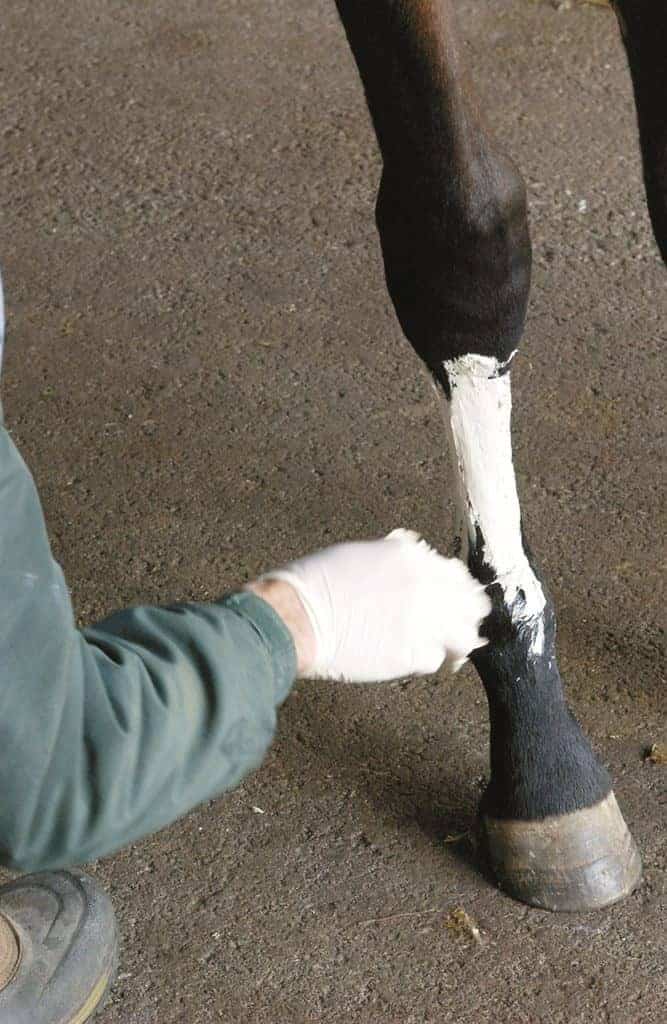
The Benefit of Poultices During the Show Season
Poultice can help reduce tissue heat and swelling caused by high intensity training and performance.

Poultice can help reduce tissue heat and swelling caused by high intensity training and performance.

The latest therapies for injured tendons and ligaments focus on rebuilding tissue to its original strength.
Equine atypical myopathy (EAM), a seasonal, pasture-associated muscle disorder of unknown etiology (cause), presents a particular challenge to veterinarians. The disease is characterized by a generalized complete degeneration of muscle fibers, which
Mouth injuries can happen in any horse, whether during elite competition or in our own stables and pastures.

It has been suggested that 60% of equine lameness problems are related to osteoarthritis, which stresses the importance of advancements of both medical & surgical treatment options.
A joint is defined as an anatomic union or junction between two or more bones. There are three basic types of joints in the horse: Synovial, fibrous, and cartilaginous.

Equine joint injections can help veterinarians diagnose lameness or medicate a horse’s painful joint.
Morphine is a useful part of pain management protocols for horses that have undergone arthroscopic surgery.
A biceps brachii tenotomy involves the complete removal of the section of the horse’s biceps tendon.
Strategies to identify specific problems in a horse with indistinct or unusual gait deficits, particularly if

The horse’s body is both exceedingly powerful and capable of bending, turning around tight corners, and stopping on a dime, all thanks to his intricate combination of muscles, tendons, and ligaments.
A research team concluded that repair tissue occupying full-thickness articular lesions is functionally very different from normal articular cartilage.

Bone chips in a horse’s movable joints can compromise the animal’s ability to perform, and, in some cases, they can even end the animal’s career. However, not all bone chips are created equal.
Zayat Stables’ Pioneerof the Nile, winner of four consecutive graded stakes and second in the Kentucky Derby, has been retired due to a soft tissue injury to his left front leg.
One of the top colts of his generation, the homebred son
Thoroughbred Le Havre, winner of the June 7 Prix du Jockey-Club (Fr-I, the French Derby) for owner Gerard Augustin-Normand, has been retired from racing because of a tendon injury suffered during the classic race, according to the Racing

Horses that are mainly ridden on weekends require special care and training to avoid injury.
Stay on top of the most recent Horse Health news with
"*" indicates required fields